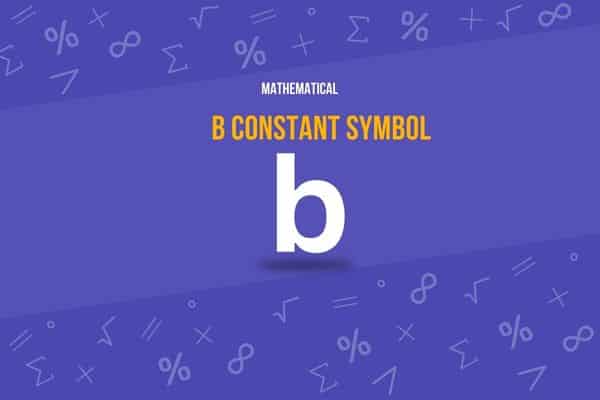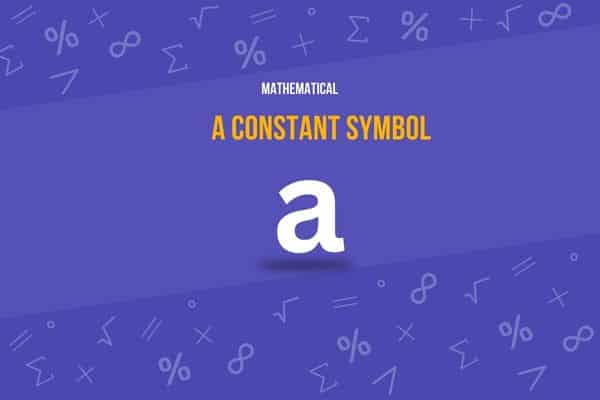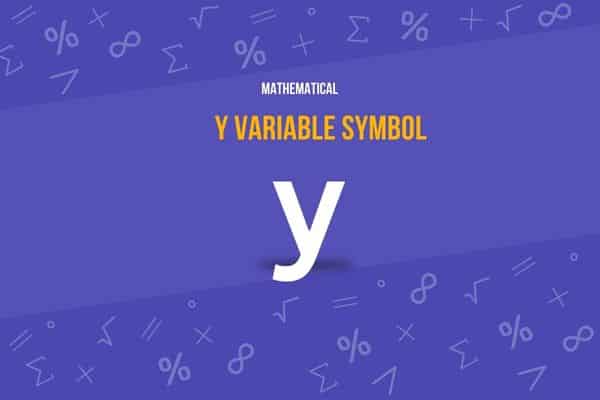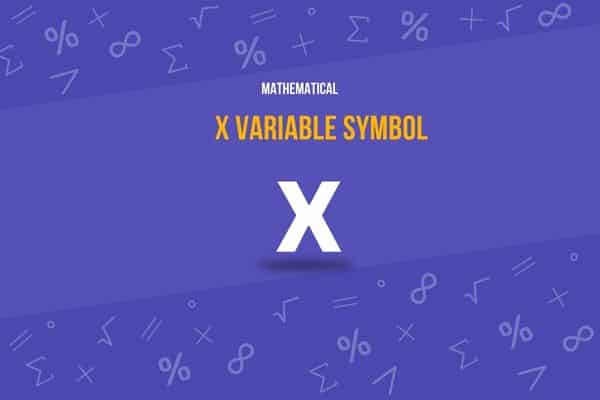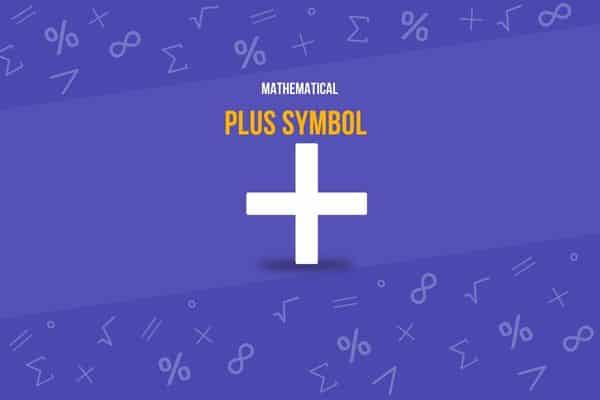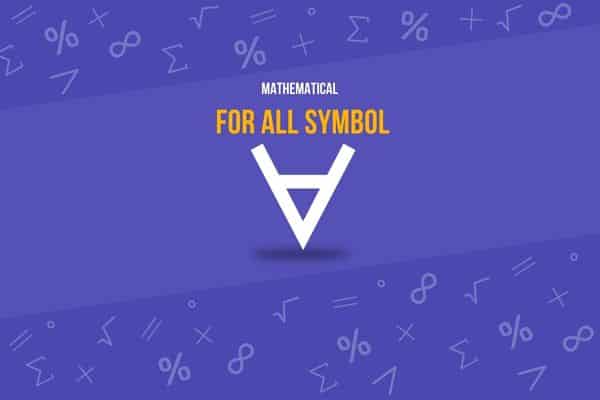What is the Percent Symbol?
Have you ever stopped to ponder the significance of the humble percent symbol (%) in our lives?
How does this simple yet powerful symbol encapsulate so much in just a stroke or two? Well, there’s much more to this versatile symbol than just marking discount sale prices or indicating tax rates.
Imagine understanding it from a whole new perspective, grasping its history, mathematical uses, and even its applications in programming.
Let’s check it out!
Fast Facts
%
Percent Symbol
Percent Symbol Overview
Here’s a table containing detailed information about the Percent Symbol (%):
| Attribute | Details |
|---|---|
| Symbol Name | Percent Sign |
| Unicode | U+0025 |
| Image | % |
| Brief Description | Represents 1 part in 100, commonly used in expressing rates and ratios. |
| Unicode Version | Unicode 1.1 (June 1993) |
| Unicode Block Name | Basic Latin |
| Plane | Basic Multilingual Plane |
| Script | Common |
| Category | Symbol, Math |
| Bidirectional Class | European Separator (ES) |
| Combining Class | 0 (Spacing, split, enclosing, reordrant, etc.) |
| Character is Mirrored | No |
| HTML Entity | % or % |
| CSS | \0025 |
| UTF-8 Encoding | 0x25 |
| UTF-16 Encoding | 0x0025 |
| UTF-32 Encoding | 0x00000025 |
Here’s What You Will Find
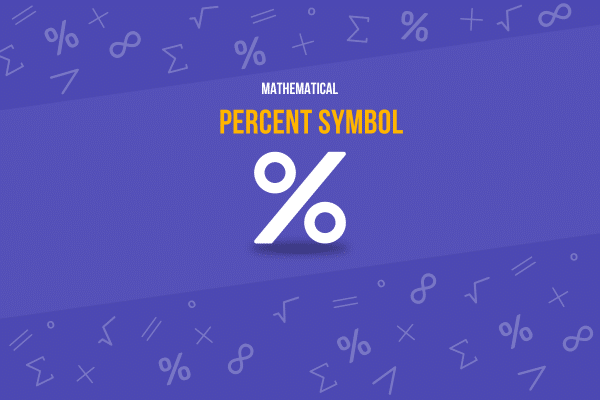
Percent Symbol
The percent symbol, denoted as “%,” is a universally recognized character representing a ratio or number out of one hundred. In mathematical operations, it’s particularly handy when dealing with percentages, aiding us to express fractions as parts of one hundred. However, its utility isn’t just confined to arithmetic.
In computer programming, the percent symbol often serves a different role, such as indicating a formatting operation or being utilized in modulus operations.
We encounter it regularly in daily life, whether it’s calculating discounts, understanding interest rates, or interpreting statistical data. Indeed, the percent symbol is a small but significant aspect of our numeric and linguistic fabric.
Other Names
While most commonly known as the percent symbol or percentage sign, this ubiquitous symbol has a few other less commonly used names.
It’s often called “mod” or “modulo” in coding and programming circles due to its role in modulus operations. In URL encoding, it’s known as the “URL encode symbol,” as it represents special characters.
In some regions, it’s colloquially called the “hundredth sign” or “the sign of hundredths.”
Regardless of what it’s called, its meaning and significance remain consistent across contexts.
Percent Symbol Meaning
The percentage symbol (%) is a mathematical symbol that denotes a proportion or ratio expressed as a fraction of 100. Commonly recognized by its unique design featuring a diagonal slash through two circles, this symbol simplifies the representation of fractions and ratios in daily mathematical calculations, financial statements, and statistical data, making it an essential tool for conveying percentages.
The percent symbol, represented by “%,” is a graphical representation of the concept of percentage, signifying “per hundred” or “out of 100”. It’s essentially used to express a proportion or a fraction in terms of 100, allowing for simple, standardized comparison and understanding of ratios.
For instance, if you were to say that 60% of a group of people prefers tea over coffee, this would mean that 60 out of every 100 individuals surveyed expressed this preference. Using the percent symbol, we can easily communicate and understand these proportions, irrespective of the size or scale of the numbers involved.
This concept of standardized comparison is vital in numerous fields, including economics, finance, statistics, and data analysis, where percentage values are used to express rates, proportions, changes, and comparisons.
Furthermore, the percent symbol has different meanings in computer programming, serving various functions such as representing modulus operations or format specifiers.
Despite its simplistic design, the percent symbol carries profound meaning. It effectively conveys complex numerical information in a universally understandable manner.
Percent Symbol Unicode
Unicode is a computing industry standard designed to consistently represent and manipulate text expressed in any of the world’s writing systems. Developed in collaboration with the Unicode Consortium, the objective of Unicode is to unify various character sets and encodings into a single standard, thus solving problems associated with the previously existing competing standards.
The Unicode for the percent symbol is U+0025. This code is part of the Unicode Basic Latin range, encompassing the first 128 characters of the Unicode standard and identical to ASCII, an earlier encoding standard.
When you see ‘%,’ whether on a webpage or in a text document, it’s likely encoded as U+0025 under the hood, ensuring that this universally recognized symbol is consistently represented across different platforms and systems.
Percent Symbol Uses
The Percent Symbol (%) is widely used across various fields to denote proportions relative to a hundred. Here are some specific uses:
- Finance: To express interest rates, discounts, loan terms, and investment returns as a percentage of the principal.
- Statistics: For reporting data in surveys and studies, such as demographic percentages, response rates, or prevalence rates.
- Business and Economics: Calculating profit margins, markup percentages, and break-even analysis.
- Education: Used in grading systems to represent scores as percentages out of 100.
- Healthcare: To quantify the concentration of solutions in medical formulations or to describe the statistical health outcomes in medical studies.
- Retail: To advertise discounts and sales, retailers show the percentage reduction in price.
The percent symbol is significant in various domains, from mathematics and finance to coding and data representation. In mathematics, it’s commonly used to express a ratio as a fraction of 100, making it easier to understand proportions. This comes in handy in everyday scenarios, like calculating discounts during shopping or determining the interest on a loan.
Finance expresses rates such as profit margins, interest rates, and changes in stock market values. The percent symbol also plays a crucial role in programming languages.
For instance, in Python, it’s used for modulus operations to determine the remainder of a division operation, and in C-style languages, it’s used as a placeholder in formatted strings.
Furthermore, in web development, it’s part of URL encoding, representing special characters in web addresses. The uses of the percent symbol are vast and varied, highlighting its integral role in our numerical and digital worlds.
Percent Symbol Example
Let’s consider a simple one related to discounts, something we often encounter daily.
Suppose you’re shopping online and see a pair of shoes you’ve had your eye on that is now on sale. The original price is $150, but the website advertises a 20% discount. How much would you save?
In this case, you’d calculate the discount by taking 20% of $150.
You’d express this in mathematical terms as 20/100 * 150. The calculation gives you $30, meaning that’s the amount you’d save on this purchase thanks to the discount. After the discount, the shoes would now cost $150 – $30 = $120.
In this example, the percent symbol expresses the discount rate as a proportion of 100, making it easy to calculate the discount amount.
Why is the Percent Symbol Important?
The percent symbol is undeniably important because it universally communicates a specific mathematical concept: the notion of parts per hundred.
This concept is vital in various fields, from finance and economics to statistics and data analysis. By expressing values as a percentage, we can easily compare different quantities, irrespective of their sizes.
For instance, we can readily understand and compare performance or growth rates across different sectors, regions, or periods.
The percent symbol is also crucial in coding and programming, allowing for specific operations like formatting and modulus calculation.
Thus, in its simplicity, the percent symbol promotes clarity, efficiency, and consistency in mathematical and digital communication worldwide.
Percent Symbol History
The percent symbol (%) has a rich historical background that traces back to ancient civilizations but became standardized in its current form relatively recently. Here’s a brief overview of its evolution:
- Ancient Origins: The concept of calculating percentages originates from ancient practices, where fractions were used to calculate taxes, interest, and other financial calculations. Ancient Romans computed percentages using fractions in hundredths, which is directly analogous to our modern percentage calculations.
- Medieval Developments: The term “percent” derives from the Latin “per centum,” meaning “by the hundred.” Medieval mathematicians in Europe refined the use of percentages, especially in commerce and finance, to simplify calculations involving fractions.
- Symbol Creation: The actual symbol (%) evolved from the Italian term “per cento,” which was abbreviated over time. Initially, the symbol was written as “pc” with a line through the letters, gradually evolving into the modern symbol with two circles separated by a slash, which was standardized in the early 20th century.
- Standardization in Print: The percent symbol became widespread with printing technology, as it was included in typewriters and printing presses, which helped standardize its form and usage across various languages and regions.
- Modern Usage: Today, the percent symbol is ubiquitous in financial documents, educational materials, statistical reports, and daily communication, highlighting its importance in modern numeric and data representation.
The evolution of the percent symbol reflects its fundamental role in arithmetic and commerce, transitioning from ancient manuscripts to a key component of modern digital communication.
As we know it today, the percent symbol has a rather intriguing history. Its origins can be traced back to 15th-century Italy. The term “per cento,” meaning “for each hundred” in Italian, was abbreviated to “pc,” and these letters were written so that they overlapped, creating a design somewhat akin to the modern percent symbol.
As this practice spread across Europe, the symbol started evolving. By the 17th century, it had become more streamlined and began to resemble the contemporary design.
Percent Symbol Origin
The origin of the percent symbol (%) is deeply rooted in the commercial and mathematical practices of ancient and medieval societies. Here’s a closer look at its development:
- Linguistic Roots: The concept stems from the Latin phrase “per centum,” meaning “for every hundred.” This phrasing was crucial in commerce, finance, and taxation calculations, where fractions needed to be expressed in terms of hundreds.
- Symbol Formation: Over time, the term “per cento” in Italian evolved into the abbreviation “p.c.” with a line through the letters, simplifying written communication. This eventually led to the modern symbol, formed by placing two zeros with a slash through them, which visually and conceptually represents the division by a hundred.
- Adoption in Print: The percent symbol became standardized with the rise of printing technology. Printers adopted this symbol due to its efficiency in typesetting and its universal applicability in mathematical and financial documents.
- Modern Standardization: The widespread use of the percent symbol was solidified through its inclusion in typewriters and computers, standardizing it across various languages and regions and cementing its role in global communication.
The percent symbol’s origin illustrates its practical utility in conveying ratios and proportions, making it indispensable in fields requiring precise and clear mathematical expressions.
The ‘%’ symbol we use today was first introduced in the 18th century and has since become universally recognized. Despite its Italian roots, the symbol is now used worldwide in various contexts, each time conveying the notion of ‘parts per hundred,’ a testament to the enduring and adaptable nature of this mathematical symbol.
Evolution of the Percent Symbol
The percent symbol has undergone a notable evolution since its inception. Its roots can be traced back to the phrase “per cento,” which over time was abbreviated as “pc,” with the two letters frequently written on top of one another. This created a kind of combined symbol, a far cry from the clean lines of the modern percent symbol we’re familiar with.
The current form of the symbol, the ‘%’ we use today, didn’t become standardized until the late 18th century. Even since then, slight stylistic variations can be seen depending on the typeface or handwriting, but the core design remains consistent.
As digital communication has grown, the symbol’s rendering has become more uniform across different platforms, maintaining its universally recognized structure.
This transformation over centuries highlights the percent symbol’s resilience and adaptability, demonstrating its crucial role in numerical representation.
Percent Symbol In Everyday Life
Reflecting on the percent symbol, it’s remarkable how such a simple symbol can encapsulate a concept as vast and significant as a percentage. Its presence is felt in numerous aspects of our daily routines, subtly guiding our decisions and understanding.
For instance, when considering our diet, understanding food labels often involves dealing with percentages, like the daily values of nutrients.
We could consciously incorporate the principles of percentages into our nutrition planning, aiming for a certain percentage of macros or specific nutrients each day.
Similarly, when managing personal finances, percentages are vital; from calculating discounts while shopping to understanding interest rates on savings or loans or even tracking changes in investments, using the percent symbol can provide greater insight and control over financial health.
Reflecting on these examples helps us appreciate how a simple mathematical symbol carries real-world significance and guides practical aspects of our lives.
Last Thoughts
In wrapping up, it’s clear that the percent symbol is far more than just a pair of strokes on paper or screen. Its role in mathematics, finance, programming, and even popular culture underlines its ubiquity and versatility. Whether we’re decoding data, calculating a discount, or simply appreciating its influence in art and media, the percent symbol is a part of our daily lives in many unexpected ways.
We encourage you to explore the fascinating world of other symbols and signs, each with its unique history and meanings. And if the percent symbol has piqued your interest, why not check out related merchandise?
Before You Go
We warmly invite you to continue exploring the intriguing world of other symbols, each with its unique stories and multifaceted applications spanning various domains of knowledge and culture.
If you found this post informative and intriguing, please consider sharing it with your network. By exploring the percent symbol, you can help others appreciate its fascinating history and versatile applications.
Sharing knowledge is a powerful way to enrich others’ understanding and foster a community of learning and curiosity.

